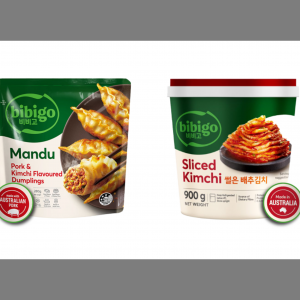Each day, many people habitually swipe their credit cards when making purchases. However, how would they react if they found out they were involuntarily eating a credit card every week? How can people stop this from happening? The solution lies in reducing the amount of plastic pollution that involuntarily ends up in our water sources.
Microplastics: An Unexpected Ingredient in Our Meals

While history has already seen the Stone Age, Bronze Age and Iron Age, one could consider modern times the ‘Plastic Age’, as plastics are frequently used and are so commonplace in daily life. While plastic provides convenience in daily life, it is a huge contributor to environmental pollution. This is because unlike ordinary waste on land, when plastic makes its way into water sources, it does not decay or decompose, but instead it is eroded by the water. Over time, this plastic becomes smaller and smaller and eventually it becomes a product known as microplastics.
Small fish in the sea mistake this plastic for plankton and eat it, leading to an accumulation of microplastics in their bodies. Other bigger fish then eat those small fish, and the plastic that was consumed by these fish eventually ends up being consumed by humans. When people eat seafood, microplastics accumulate in the human body. This amounts to around 187,000 pieces of microplastic consumed per year, an amount equivalent to eating a credit card a week.
Eco-friendly Initiatives Companies Are Taking to Reduce Microplastics
In order to prevent this vicious cycle from occurring, many companies are actively pursuing new ways to reduce their plastic production. For example, Coca-Cola has declared that it will use eco-friendly renewable materials in 50% of its plastic beverage bottles by 2030. Similarly, Nike has released sneakers made of eco-friendly renewable materials.
Korean companies are also taking steps to protect the environment. Some businesses provide takeout cups that do not need straws, SPAM is making containers without lids and there are gift sets that use paper trays instead of plastic. CJ CheilJedang has also reduced its annual plastic usage by about 340 tons by creating thinner Hetbahn instant rice containers. Additionally, CJ CheilJedang is making an effort to lead social responsibility for the environment by utilizing biodegradable materials in its packaging of food products.
However, using less or recycled plastic is not enough to solve our planet’s pressing environmental problems. Therefore, countries around the world are enforcing new regulations regarding plastic use and researching biodegradable plastic materials. Due to these environmental problems and the increasing demand for sustainable solutions, the market for biodegradable plastics is growing now more than ever.
Which Biodegradable Plastic Is the Most Eco-friendly?
1. PLA: A Cost-Effective and Heavily Used Plastic

The most common material for biodegradable plastic is polylactic acid (PLA), which is made of cornstarch or sugar cane. PLA is suitable to use as a food container since it is inexpensive and does not contain any harmful substances, such as endocrine disruptors or heavy metal contents. However, it is only biodegradable under specific facility conditions, such as requiring a moisture level higher than 70% and a temperature higher than 58℃.
2. PBAT: A Durable Material with Excellent Strength and Processability
Polybutylene adipate terephthalate (PBAT) is a biodegradable plastic material that is both durable and highly processible. It does not require any special conditions to be decomposed. However, PBAT is made with 100% petroleum-based material, making it unsustainable in the long term.
3. PHA: The Only Material That Decomposes in Water
Polyhydroxyalkanoate (PHA) is a molecular substance that microorganisms accumulate in their cells after eating ingredients derived from plants. Since microorganisms make and decompose this substance themselves, it can be used as a natural decomposer in all environments, including factories, homes, in soil and the ocean.
Overall, PHA is the only material that can be decomposed in various conditions, including in water sources where it is most difficult for plastic to decompose. Therefore, it can be considered the most eco-friendly biodegradable plastic. It has the ability to overcome the shortcomings of PLA, which is most commonly used every day but can only be decomposed in certain conditions, and PBAT, which can be decomposed in soil but is made with 100% petroleum-based material.
In the past, there were only a few companies in the United States and Japan that possessed PHA production technology. Despite having this technology, there were difficulties using them. However nowadays, CJ CheilJedang, which has been pursuing research for new innovative bio products such as essential amino acids for feeds and microbial fermentation since 1964, will now be able to produce PHA. Through its unparalleled microbial fermentation technology and its eco-friendly construction methods, CJ CheilJedang was able to perfect PHA production.
Initiatives to protect the environment continue to gain momentum around the world. Although plastic usage cannot be immediately halted, small steps can make a big difference in the long term. These small actions to protect the environment have the potential to act as a butterfly effect that can save many lives and protect the Earth.











